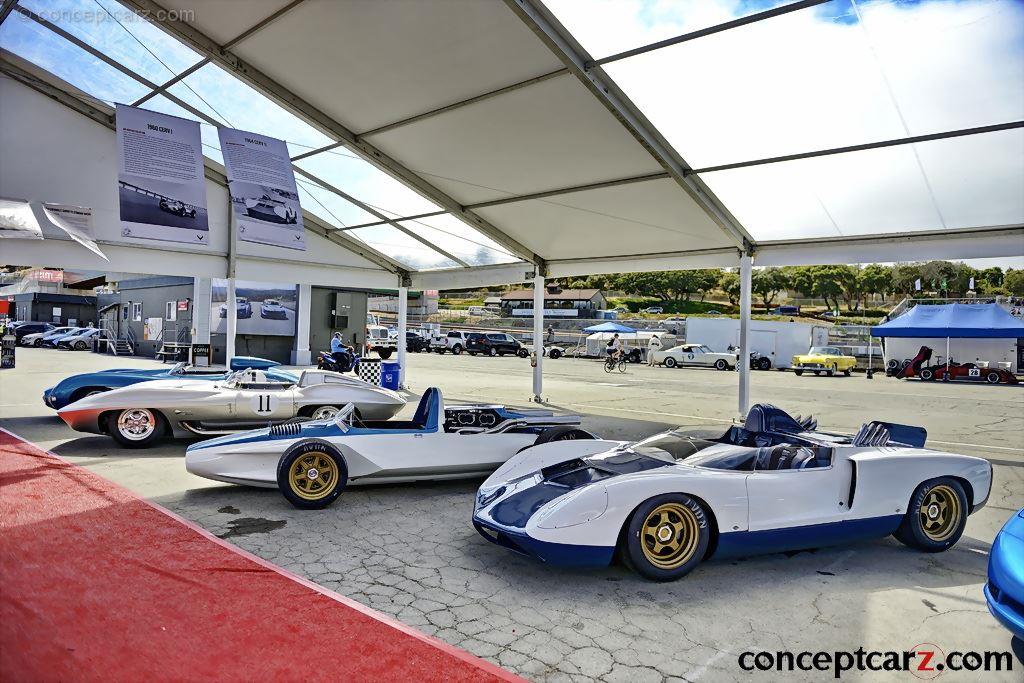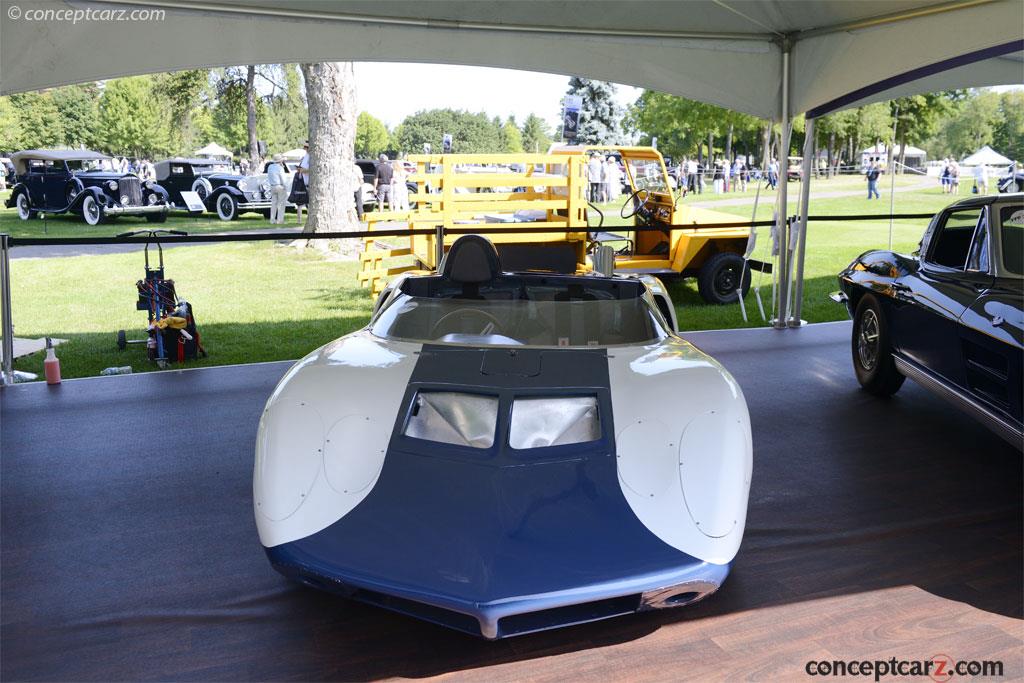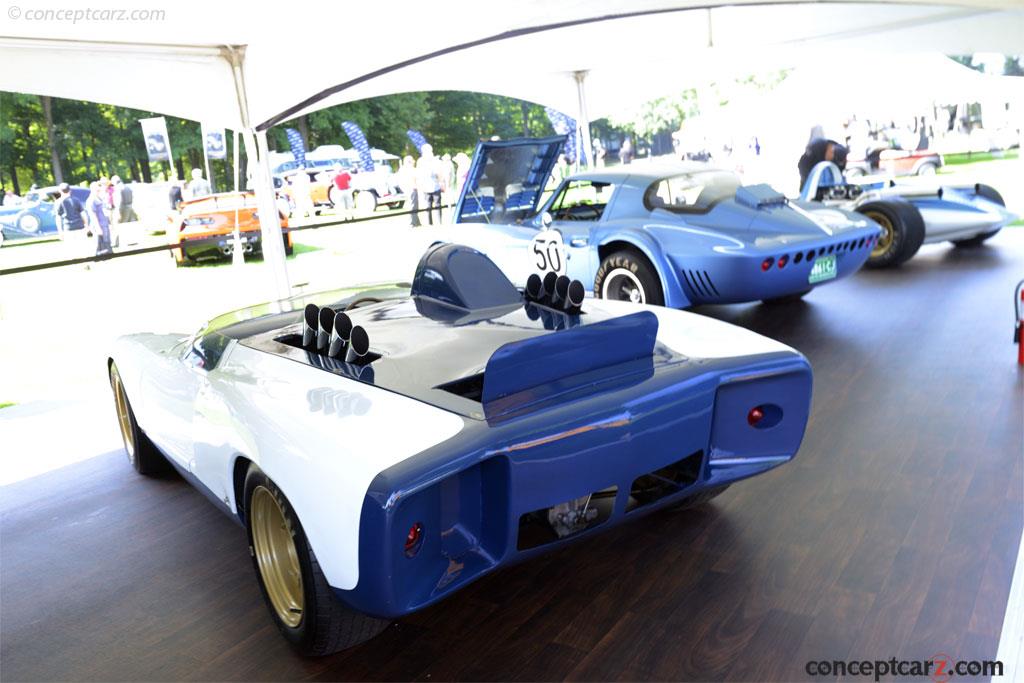Harley Earl was the inventor of the Corvette but it was Zora Arkus-Duntov who became regarded as the 'Father of the Corvette.' Arkus-Duntov was also a successful racing driver, taking class victories in 1954 and 1955 24 Heures du Mans. He joined General Motors in 1953 after seeing the Motorama Corvette on display in New York City. Although it had an attractive design, Arkus-Duntov was disappointed with what was underneath. Implementing suggestions made by Arkus-Duntov, Chevrolet and the Corvette was transformed from conservative into youthful and exciting. After fitting a small-block V8 into a Corvette, he showcased the car's potential by ascending Pike's Peak in 1956 in a pre-production car, setting a stock car record. That same year he took the Corvette to Daytona Beach and hit a record-setting 150 mph over the flying mile. He also developed the Duntov high-lift camshaft and helped bring fuel injection to the 1957 Corvette. He was also responsible for introducing four-wheel disc brakes on a mass-produced American car for the first time. In the early 1960s, he introduced the Grand Sport program, helping to cement the Corvette as 'America's sports car.' 
Roadster
Chassis #: P-3910
Engine #: T1212E 2-92199-A
View info and history
Auction entries : 1CERV I (Chevrolet Engineering Research Vehicle) was completed in 1960 and was aimed at open-wheel racing. It featured advanced construction with a conventional design. Power was from an all-aluminum pushrod, 377-cubic-inch small-block which would later be used in racing Corvette Grand Sports in 1963. Rumors circulated that the next generation of Corvette would be mid-engine, especially since Ferrari and Ford were developing mid-engine supercars. Those rumors turned out to be nearly true, with Chevy's radically different CERV II. Inspired by the 'integral drive' Bugatti T53 race car of the mid-1930s, Duntov made an attempt at four-wheel drive. The Bugatti had been fast but difficult to maneuver and it was hard for drivers to manage. Duntov felt he was able to tackle the problem, as he had Chevrolet General Manager Bunkie Knudsen and the engineering might of General Motors behind him. Work began on CERV II in late 1961. Originally, his plan was for a run of six cars that could compete at long-distance events such as Le Mans and Sebring. They were designated the G.S. 2/3 (Grand Sport 2 for two-wheel drive or Grand Sport 3 for four-wheel drive.) The G.S. 2/3 received four-wheel drive and the 327 CID engine. Members of the CERV I team helped with construction, including engineers and builders Walt Zetye, Ernie Lumus, and Bob Kethmann and stylists Larry Shinoda and Tony Lapine. 
Roadster
Chassis #: P-3910
Engine #: T1212E 2-92199-A
View info and history
Auction entries : 1The target weight was a mere 1,400 pounds. The initial configuration nearly met that mark, thanks to titanium hubs, connecting rods, valves, and an exhaust manifold. The four-wheel-drive system used an unconventional setup utilizing an 11-inch Powerglide torque converter and a clutchless two-speed manual gearbox hung from the rear of the car. A driveshaft extended to a second 10-inch Powerglide torque converter at the front of the car, with a second semi-automatic transmission. With high-speed gearing and between 500 and 550 horsepower from the 377 engine, the Chevrolet reached 212 mph on the track. When geared for a sprint, zero-to-sixty mph was accomplished in 2.8 seconds.
Roadster
Chassis #: P-3910
Engine #: T1212E 2-92199-A
View info and history
Auction entries : 1The car was ready by the mid-1960s and had it gone racing, it would have been a direct competitor to the Ford GT40. Around the spring of 1964, General Motors informed Knudsen and Duntov that racing was off the table. Repurposing it as CERV II, Duntov requested that the car be used as a demonstration vehicle to showcase its engineering and imagination. CERV II was used for aerodynamic research, tire testing for both the original Firestones and new Goodyears, and top speed testing at Milford Proving Grounds. Corvette test driver Bob Clift received most of the seat time. Around 1969, a new all-aluminum 427-cubic inch ZL1 V8 was tested in CERV II. 
Roadster
Chassis #: P-3910
Engine #: T1212E 2-92199-A
View info and history
Auction entries : 1Its last test results are from 1970, after which it was put into storage. Around December of 1974, it was sent to the Design Staff Warehouse in Warren, Michigan, where it was accompanied by a ZL1 and a spare fuel-injected 377 with dual ignition and a third unspecified SOHC fuel-injected engine, as well as probably another 377. Multiple boxes of spares were with the car, including 18 unique Halibrand CERV II knockoff wheels. These materials have since disappeared. A short time later, CERV II was donated to the Briggs Cunningham Automotive Museum in Costa Mesa, California, where it was displayed for the next decade. When the museum closed in 1986 it was acquired by Miles Collier who later sold it to John Moores. Mr. Moores later donated the car to the Scripps Research Institute, from which it was sold in 2001 to another caretaker. In 2013, it was sold by RM Sothebys to a new owner.
by Daniel Vaughan | Aug 2018

Roadster
Chassis #: P-3910
Engine #: T1212E 2-92199-A
View info and history
Auction entries : 1

Roadster
Chassis #: P-3910
Engine #: T1212E 2-92199-A
View info and history
Auction entries : 1

Roadster
Chassis #: P-3910
Engine #: T1212E 2-92199-A
View info and history
Auction entries : 1

Roadster
Chassis #: P-3910
Engine #: T1212E 2-92199-A
View info and history
Auction entries : 1
by Daniel Vaughan | Aug 2018
Similar Vehicles
 1960 Chevrolet CERV I
1960 Chevrolet CERV I 1990 Chevrolet Corvette CERV III Experimental
1990 Chevrolet Corvette CERV III Experimental 1964 Chevrolet Corvette XP-819
1964 Chevrolet Corvette XP-819 1968 Chevrolet Astro II
1968 Chevrolet Astro II 1986 Chevrolet Corvette Indy Concept
1986 Chevrolet Corvette Indy Concept 1974 Chevrolet Corvette XP-895 Experimental
1974 Chevrolet Corvette XP-895 Experimental 1973 Chevrolet Aerovette Concept
1973 Chevrolet Aerovette Concept 1973 Chevrolet Corvette XP-897GT
1973 Chevrolet Corvette XP-897GT 2020 Chevrolet Corvette Stingray
2020 Chevrolet Corvette StingrayChevrolet Monthly Sales Volume
March 2023
398,141
1964 Chevrolet CERV II Vehicle Profiles
Recent Vehicle Additions
Related Automotive News

Corvette's Journey to Mid-engine
2020 Stingray fulfills Corvettes ultimate destiny
USTIN, Calif. — The 2020 Chevrolet Corvette Stingray is the culmination of 60 years of mid-engine experimentation. While the eighth generation Corvette marks a radical leap forward in...

Gooding & Company Presents the Best of American Motoring, from Brass Era Legends to Postwar Sports Cars, at Its Pebble Beach Auctions
An incredible 1912 Simplex 50 HP Toy Tonneau, offered for sale from 111 years of single family ownership, will come to market for the first time, alongside motoring icons from the greatest eras of American automotive history.
The official auction...

The Mid-Engine Corvette at the Amelia Island Concours d'Elegance
With the recent introduction of the Chevrolet C8 Corvette, the first production mid-engine Corvette sports car, the 2020 Amelia Island Concours dElegance took the opportunity to tell the story of the mid-engine Corvette legacy. The canvas...

GS IIB Breaks Cover In The Silver Anniversary Amelia Concours Mid-Engine Corvette Class
Jacksonville, FL -- To celebrate the arrival of the Corvette C8, Chevrolets mid-engine 1964 GS IIB (Grand Sport IIB) research vehicle will join the Silver Anniversary Amelias Mid-Engine Corvette class on March 8, 2020.
This will mark the first...

Corvette's Journey to Mid-engine
2020 Stingray fulfills Corvettes ultimate destiny
USTIN, Calif. — The 2020 Chevrolet Corvette Stingray is the culmination of 60 years of mid-engine experimentation. While the eighth generation Corvette marks a radical leap forward in...

Corvette Grand Sport's Racing Legacy On and Off the Track
1960 – Urged by Zora Arkus-Duntov, Corvettes first chief engineer, racer Briggs Cunningham entered three mostly stock Corvettes in the 24 Hours of Le Mans – each powered by the innovative 283 Fuelie mechanically fuel-injected small block V8...


























